What if I told you one man had a hand in the “Cool Grey” Air Jordan 11, the “Galaxy” Nike Air Foamposite One, and UNDFTD x Air Jordan 4?
What if I told you that same man spent much of his career antagonized by footwear’s most feverish fans?
Well, that man is Gentry Humphrey, who will soon be retiring from a career at Jordan Brand and Nike that touched four different decades.
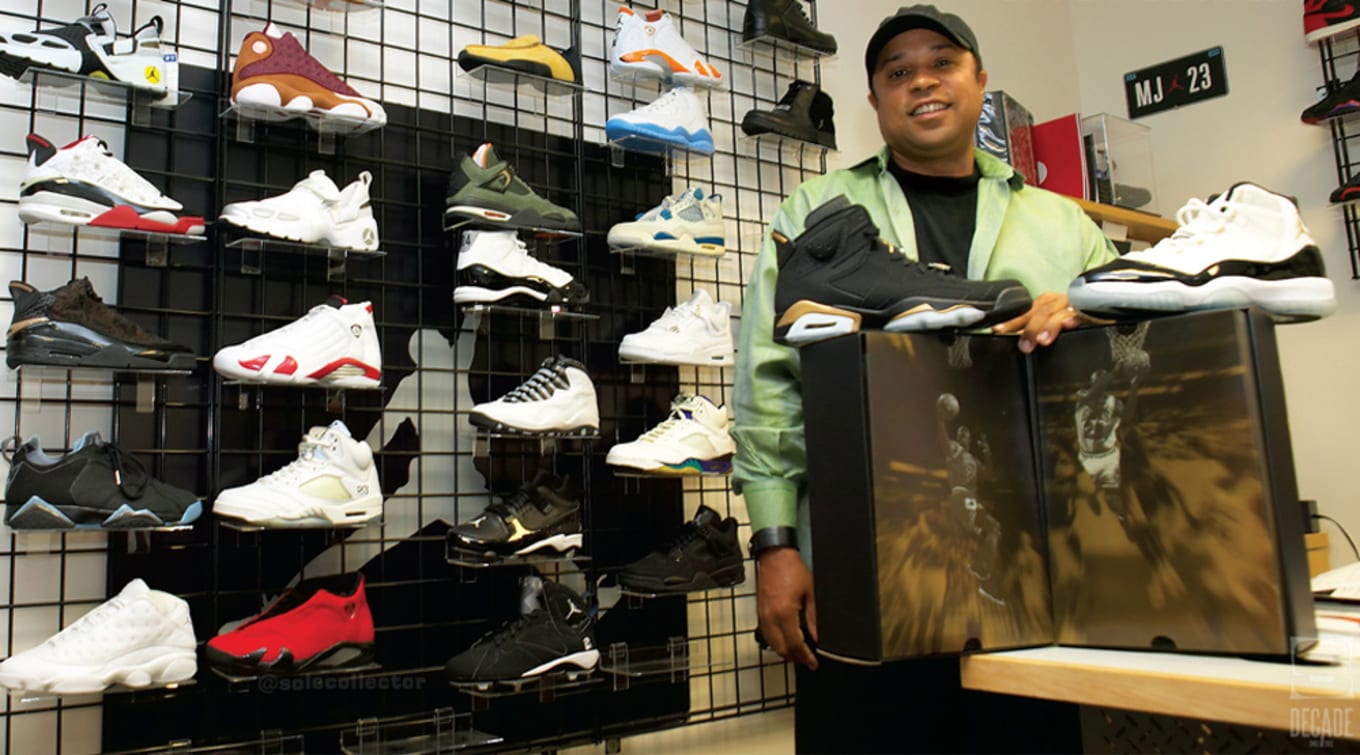
Gentry Humphrey with a wall of his creations (Image via Sole Collector)
Much like modern sneaker storyteller Ronnie Fieg, Gentry began his colorful career in footwear as a stock boy. Starting in sunny Southern California, Gentry worked his way up the ladder from Nordstrom to Nike as his early endeavors spanned working as a buyer for the retail giant to becoming a sales rep for the Swoosh. Gentry eventually became a Product Line Sales Manager at Nike Basketball, having his hands on the Air Penny line before becoming an early employee to the newly formed Jordan Brand in the late 1990s.
Acting as a liaison to the early Jordan Brand roster, Gentry was quite literally the connection from Air Jordan’s singular Chicago past to its very plural and colorful future. While Day 1 signees like Ray Allen, Derek Anderson, and Eddie Jones were getting sent ‘cracker jacks’ in their team tones of purple, orange, and yellow, Gentry saw the bigger vision of bringing the entire Roy G Biv spectrum to that of Michael Jeffrey Jordan’s signature series.
Early on, the results were varied when venturing into new territory on old favorites. Turn of the millennium makeups like “Mocha” Air Jordan 3s and “Laney” Air Jordan 5s fell flat with many consumers while “Cool Grey” Air Jordan 11s completely changed the game.
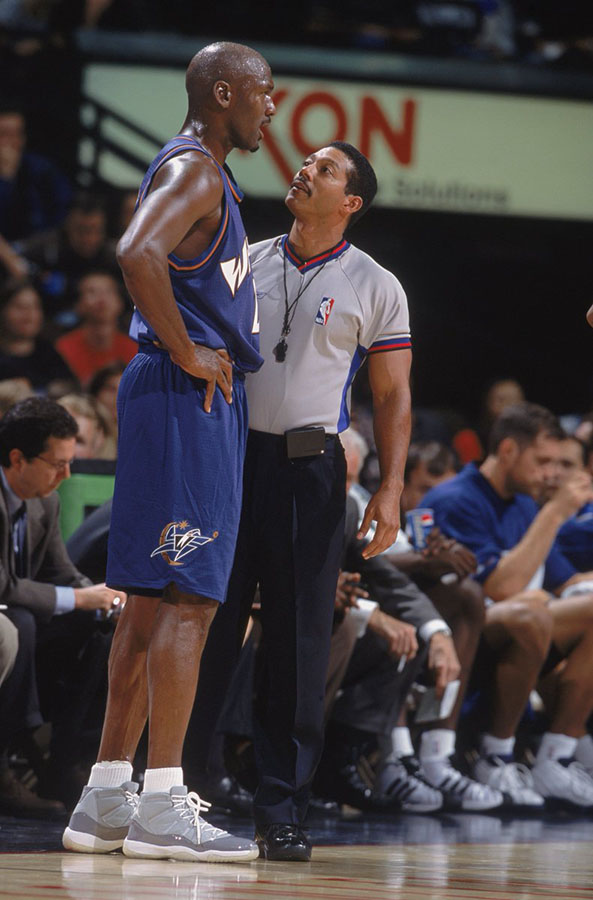
Michael Jordan in the 2001 Air Jordan 11 “Cool Grey” (Image via Aaron Dodson)
For Gentry, fortune favored the fearless no matter what zagging looked like at the moment.
“At the time, grey was such a basic color, but nobody was using it,” Gentry recalled in 2008 to Nick DePaula when discussing 2001’s now timeless new take on the Air Jordan 11. “Everyone was kind of sick of the blues and navy and reds, so with the success of the Air Max 95 with the faded grey, we thought, maybe we could do two tones of grey along the upper and not have to fade it, and it definitely worked.”
Following the success of the “Cool Grey” Air Jordan 11s, the same patent palette would translate to that of the Air Jordan 9 the next year. Undeterred by forum feedback on louder launches, the next years would see patent leather lace the Air Jordan 1, the Air Jordan 8 chopped into a low-top and Timberland tones take over the first retro release of the Air Jordan 13.
Risky? For sure, but getting flamed online did not appear to be in the back of Gentry’s mind. Rather, his focus was growing the heritage brand by creating what we’d considered fire in the future.

Air Jordan 13 “Altitude” (Image via Sneaker Bar Detroit)
“At Jordan, we have a certain color blocking and design language,” Gentry shared in that same ‘08 interview. “And so I asked myself, ‘If I were to do something totally off the wall and play with it what would it be?’ And so I came up with crazy stuff.”
Going crazy with new retro renditions kept Jordan Brand growing in the 2000s, and it kept Gentry both busy and antagonized.
By the mid-2000s, even when Gentry hit home runs, his detractors still struck at him. Take 2005’s “Altitude” Air Jordan 13. Shifting the palette, presentation, and distribution of MJ’s hologram sporting signature, the shoe shook up the sneaker world not just by its blocking but by how hard it was to get.
Critics had to ask themselves if so many people disliked Gentry’s new vision for Jordan Brand then why were so many people waiting in line to get them and so upset when they sold out?
“People were freaking out over them and that one was pretty crazy,” Gentry recalled.
“Freaking out” and going “crazy” for an energy colorway tied to a retired athlete was new territory in 2005.
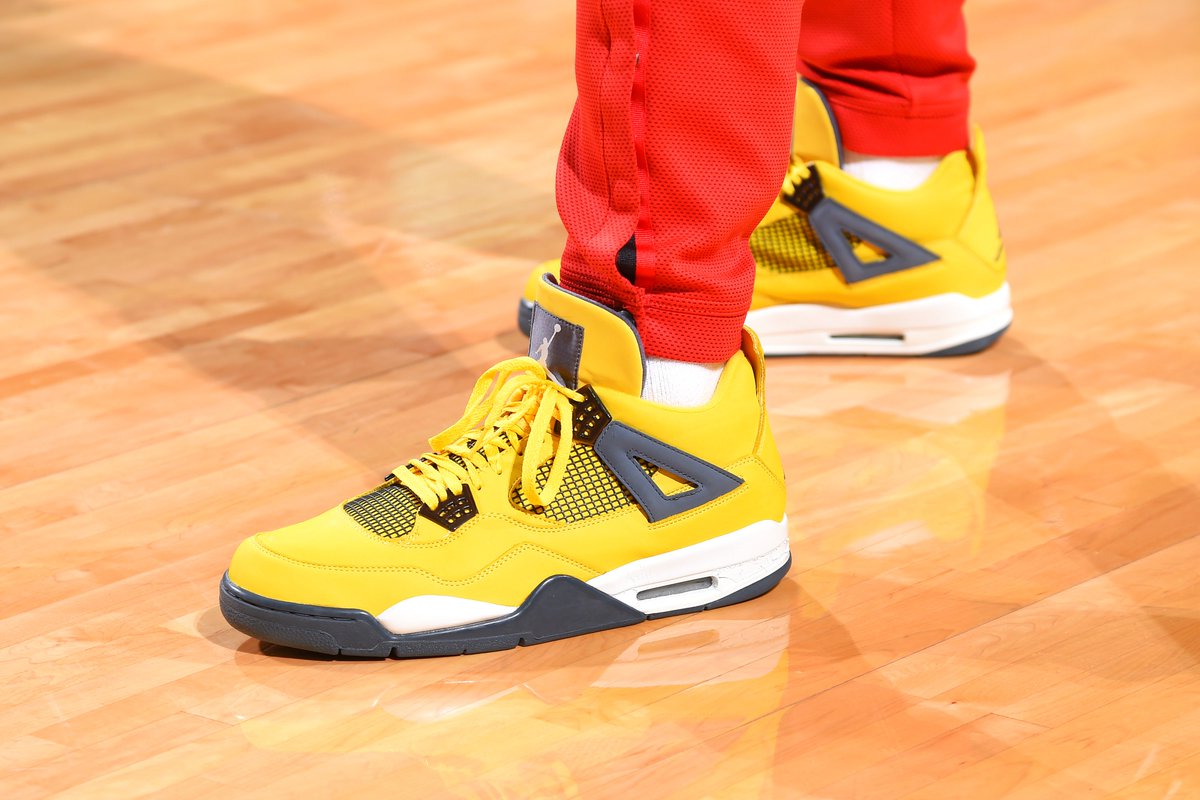
PJ Tucker in the 2006 Air Jordan 4 “Lightning (Image via BR Kicks)
However, it’s the norm in 2021 just about every Saturday.
Gentry certainly saw this new normal even if most of us didn’t. Like Mike, seeing the future came from a relentless work ethic mixed with the confidence to take risks and dare to be different.
“There’s a ton of 13 and 14 hour days,” Gentry told DePaula in 2008. “Last week everyone was gone for the holidays on vacation, but I was in the office every day. I don’t even really sleep at night, I’m always thinking about something. That’s just me. That’s just how I am and I’m always thinking.”
That tireless grind at Jordan Brand continued until 2010 when Gentry left the Jumpman in a move to Nike Sportswear. In joining the Swoosh’s decided lifestyle department, the man responsible for Defining Moments Packages and countless colorways kept that same energy when reuniting with his main man, Penny Hardaway.
Having a hand in making Foamposites major among the masses, Gentry added electricity to Penny’s oddest and most expensive sneaker ever released by simply telling stories that were bolder and stranger.
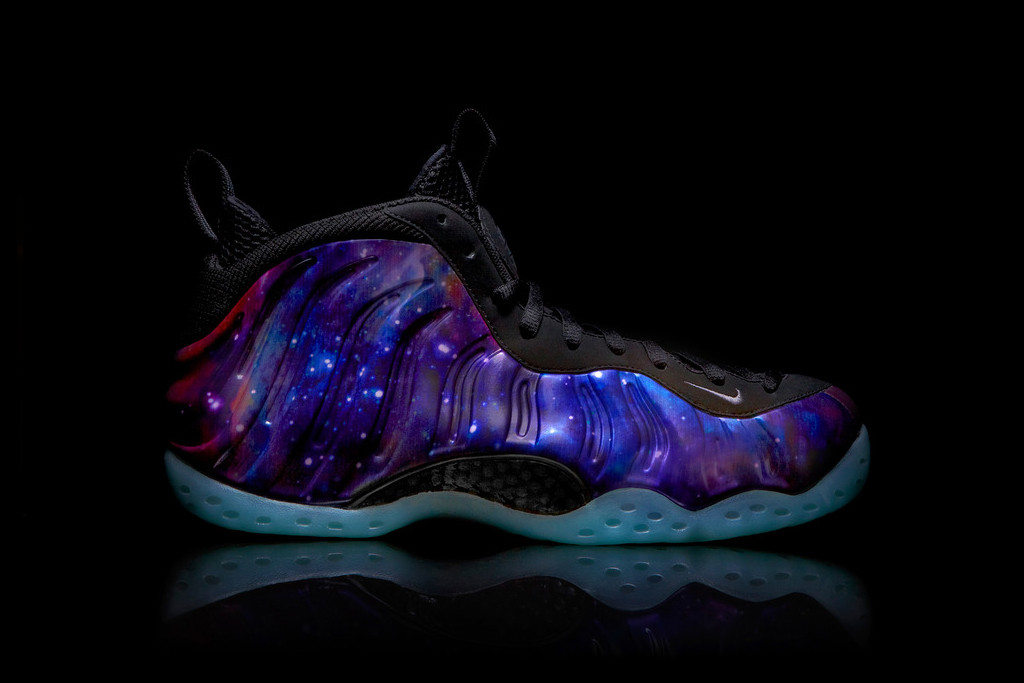
Nike Air Foamposite One “Galaxy” (Image via Hypebeast)
Like his early days at Jordan, not everyone was ready to see Foamposites in such a new light.
“When we first shopped the Galaxy around, there were a lot of people who did not really like it,” Gentry shared in a 2012 interview with Kicks on Fire. “I think it was because it was new. When you’re able to create a new point of view, you’re almost setting new trends and that’s when people usually go with you. It’s difficult to know what people are going to like in the future, but it’s our job to try and deliver that. But we had no idea how well it was going to do. We thought it was good based on our gut instinct despite what some people had said, and we could have gone ahead and not released it based on that. But we felt good about the release and we went ahead with it and obviously, a lot of people followed us. It was a good thing in the end for us.”
In Gentry’s five years at Nike Sportswear, the label would revive signature lines for the likes of Penny Hardaway and Scottie Pippen while allowing archival classics from the Air Max, Air Barkley, and Air Force families to take on new tooling like Lunarlon, Flyknit, and Hyperfuse.
Gentry’s embrace of new technology didn’t stop on the production line; it extended into his personal life as well. One of the first inside guys at Jordan and Nike to embrace social media, Gentry often engaged with fans on Twitter. This eventually led to breaking leads surrounding the “Shooting Stars” Foamposite One, the “Knicks” Foamposite One, and even the Nike Air Yeezy 2.
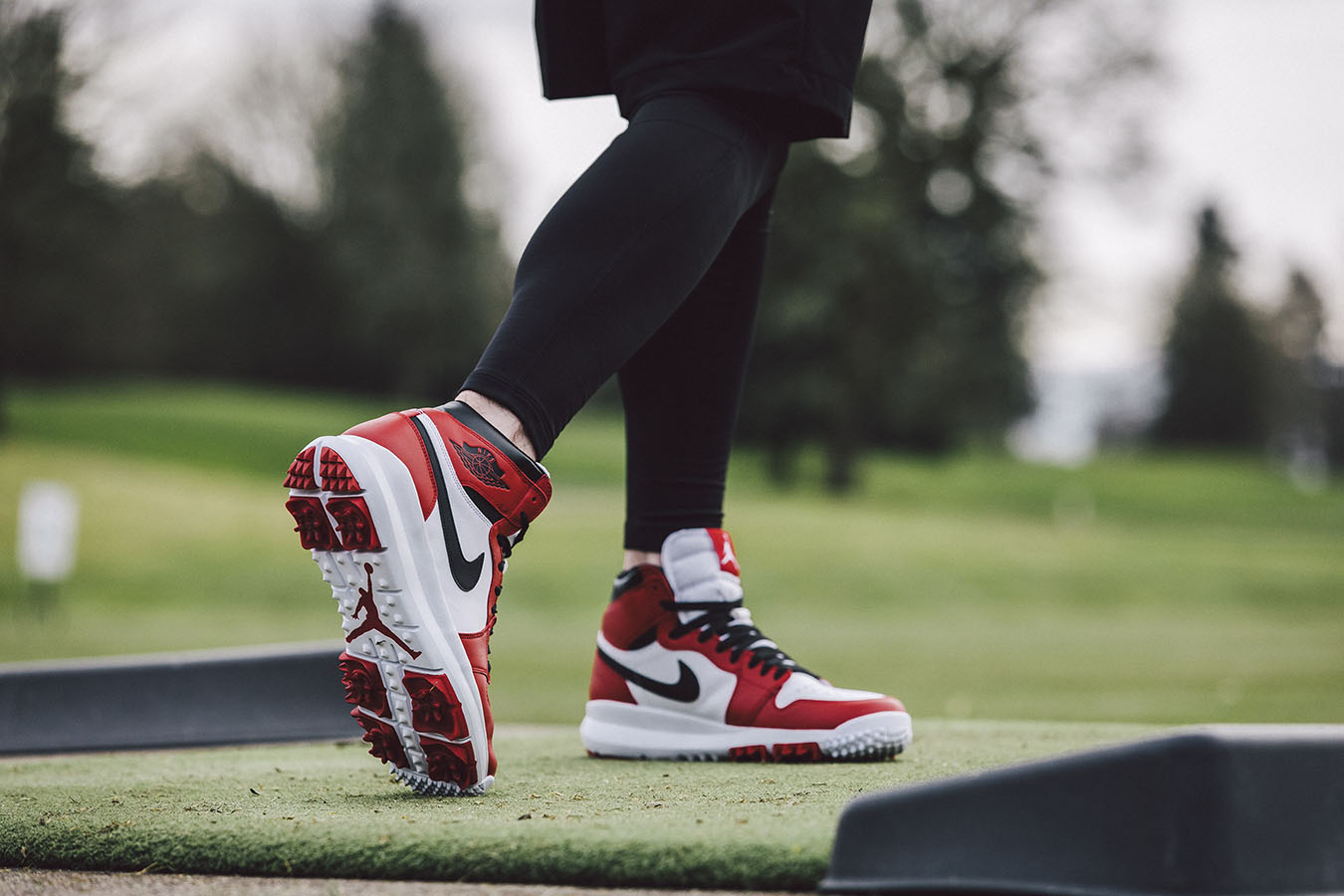
Air Jordan 1 High Golf (Image via Nike, Inc.)
By 2018, Gentry returned to MJ’s namesake company after a few years at Nike Golf. In the years since his departure, the brand had continued to grow and rolled out initiatives such as Remastered Retros. Back at JB, Gentry had the tall order of steering the ship as the company looked to leap in revenues as it expanded to new sports, new markets, and a growing appetite for consumption.
The game had gotten younger, hungrier, and faster. Still, Gentry took on the challenge.
“The funny part about this is that Gentry saved Jordan Brand twice,” noted NikeTalk member Kierris in a thread discussing his departure in not-so-nice terms. “Record-setting revenues in both his tenures. The hate comes from dudes who have no idea of how the sneaker business works.”
While you’d find a legion of Gentry detractors in forums or comment sections, you’d be hard-pressed to find someone in sneaker media who met him and didn’t like him.
With great power comes great responsibility. While just about any member of NikeTalk, InStyleShoes, or SoleSavy would love to have had the job Gentry long had, most of them would not have enjoyed the pressures that came with it. As a thought exercise, imagine making a pair of sneakers on Nike By You then ordering 500,000 for the world to buy at retail. Effectively, you’re ordering them on Michael Jordan’s credit card and have to answer to him if they don’t sell out. Either way, you’ll have the entire Internet telling you if they’re heat or they suck.
Kind of a tough gig, right?
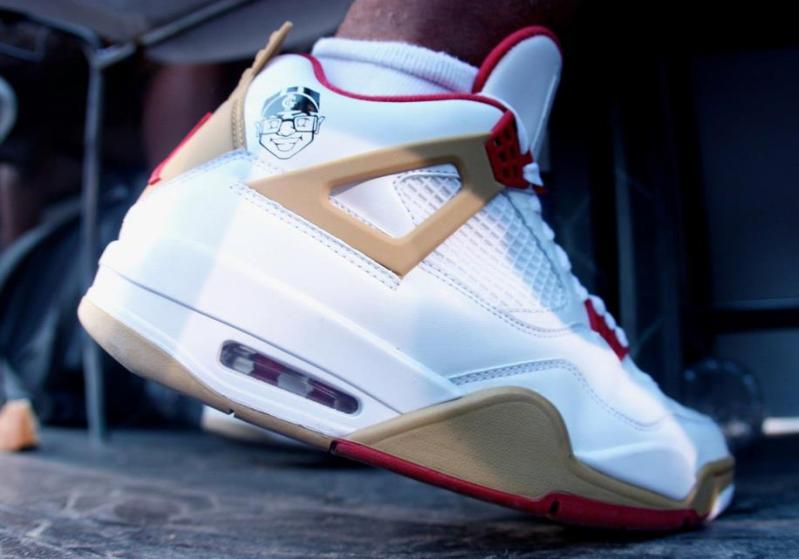
Air Jordan 4 Gentry Humphrey PE (photo via Sole Collector)
Nobody knows this pressure better than Gentry and he’s quick to humbly acknowledge this.
“There’s a ton that I think we missed,” Gentry once admitted to Nick DePaula. “We sample up several colorways every season. Of the ones that came out, I’m actually shocked at some of the lifestyle ones that came out that worked.”
Yes, just as Michael Jordan would surprise himself with shots he’d make, Gentry would surprise himself with shoes that hit. Just as Michael Jordan wasn’t afraid to miss a shot at the end of the game, Gentry was not afraid to do something new that might not work.
Clearly, it was Gentry’s combination of hard work and fearless imagination that made him an obvious hire for the high-flying kid from North Carolina who wanted to crush his opponents, drive fast cars and play in patent leather sneakers.
While Phil Knight is lauded for the marketing genius that led to the “Banned” Air Jordan 1 campaign, it was Gentry Humphrey who built off the back of Peter Moore’s tri-color boldness and turned each Air Jordan retro into Joseph’s Amazing Technicolor Dreamcoat. Over the course of his career, Gentry revived the Foamposite franchise with new life and even made an impact during his duration at Nike Golf in making cleats collectibles. Legend has it he almost retired from the game in 2017, however, Nike then convinced him to stay.
Arriving at Nike in 1994, the same year retro Jordans became a reality, and retiring from Jordan Brand the same weekend “Pollen” Air Jordan 1 Highs will absolutely sell out, Gentry helped create a category that not only gets us excited every Saturday, but it also keeps people like myself employed. All the while, he was taking heat from fans who loved footwear just as much as he did, building the business of the icon we all love while telling new stories to stretch beyond his playing days.
“There were a lot of people who said this couldn’t be what it has become,” Gentry told DePaula in that same 2008 piece. “More people doubted that we could do what we’ve done than people who thought it was going to be a success. I guess because I was always one of those kids that believed in what Jordan could become, I saw things in a different light and had more of an optimistic approach. When I became more involved, it wasn’t just a job to me, and it became part of my life. I think just to build a brand is something very special.”
Very special indeed. Thanks, Gentry.

